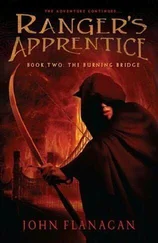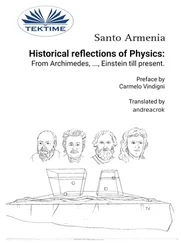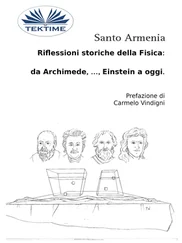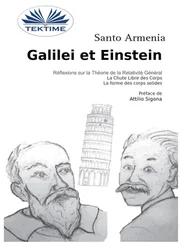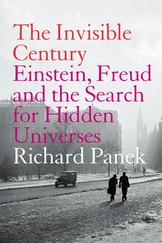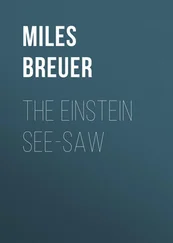Petroleum Genetics Laboratories had started by using recombinant DNA techniques to “engineer” a species of rapidly multiplying but generation-limited petroleum-eating bacteria that was proving very useful in erasing the effects of oil spills. Several small Gulf Coast spills in 1987 had demonstrated the value of PGL’s oil-eating bacteria and placed the company’s profits on a steeply rising trajectory.
Preston had used these profits to buy up “worthless” oil leases in the long-dead oil fields of East Texas, leases for wells from which all the recoverable oil had been removed decades earlier. This had been treated as a joke at first, and in late 1987 many holders of ancient East Texas leases had rushed to sell them to this “crazy Yankee” before his money ran out, he came to his senses, or he was institutionalized.
Then in December of 1987 an unexpected thing happened. PGL’s dried-up East Texas wells in the area between Glade-water and Tyler began to produce oil. Their yield curves rose, week by week, until by Christmas they equaled peak production during the golden days of Spindletop and the great Texas oil boom. In early January speculators began to buy up the dead wells nearby, but they soon found that the PGL bonanza did not extend to them. Disappointed, they sold their leases to Preston cheap to cut their losses. PGL’s profits from the producing wells fueled further acquisitions. Suddenly the major oil producers came to the realization that there was a significant new player in their business.
Several of the big oil companies had already initiated well-funded research and industrial espionage programs aimed at discovering PGL’s secret, when Preston revealed it to the news media at an April 1988 press conference in Houston. He announced that the privately held Petroleum Genetics Laboratories would henceforth become PetroGen, Inc., a public corporation whose stock would be listed on the New York Stock Exchange after an initial stock offering of twenty million shares at about fifty dollars per share.
PetroGen, in addition to its now-vast oil holdings in Texas, Oklahoma, Venezuela, and elsewhere and its exponentially rising revenues, had filed unique patent applications describing a genetically engineered family of bacteria that could free valuable petroleum from its bonds in porous layers of rock, sand, and shale, while at the same time trimming sluggish long-chain hydrocarbon molecules to the more marketable octane and septane sizes. As a proof-of-principle, these slimmed down, pre-refined petroleum products were already flowing freely at the PetroGen well heads. In less than a year a new blue-chip stock had been created on Wall Street.
August 16, 1988, was a very hot and humid Tuesday in New Orleans. The Republican Platform Committee had been meeting for a week to hammer out the new party platform. The Republican National Convention was to begin the following week in the Superdome, and thousands of reporters were converging on the Big Easy in preparation for the media feeding frenzy to come.
George Bush had campaigned hard for the Republican presidential nomination, easily outdistancing Patrick Buchanan in the primaries and gaining President Ronald Reagan’s implicit support. He now had the lion’s share of the convention delegates and was assured of the presidential nomination.
The real unresolved issue in New Orleans was Bush’s imminent choice of a candidate for Vice President. The eleven “finalists” on Bush’s short list were one by one making their way to the Marriott Hotel on Canal Street to be interviewed by Robert Kimmit, who had been an attorney with the Treasury Department before he resigned to join the Bush campaign. Bob Kimmit now had the responsibility for checking out each candidate.
PetroGen had rented an entire floor in the Canal Street Marriott just upstairs from the floors of suites that the Bush campaign organization was using as its base of operations. Roger Fulton, prominent British diamond merchant and member of the PetroGen board of directors, sat in the suite’s large living room with his colleague George Preston, rising star of the resurgent Texas oil business and “Eagle-class” contributor to the Bush campaign.
“Any late-breaking news from Washington about the SSC?” Roger asked.
“Not much,” said George. “There’s been no mention of it during the primaries. The focus of attention in D.C. is all on the campaign, and science has no value as a campaign issue. I heard recently that the DOE added a correction to its cost estimates for inflation and now admits that the SSC might cost $5.3 billion instead of $4.4 billion. Also, certain members of Congress have decided that a very visible opposition to drugs makes a good campaign issue, and they want to be assured that the SSC laboratory and other federal laboratories will be ‘drug-free work places,’ which has become their new buzzword.”
“ ‘Drug… free… work… place,’” Roger repeated slowly. “It does have a certain cadence. And I suppose it’s preferable to a work-free drug place.”
George laughed. “There’s a story going around,” he said, “that President Reagan himself decided to set a good example for the nation by asking his Cabinet members to submit to a urine analysis test during a recent cabinet meeting. They all complied, of course, and the following day the Surgeon General came to the President with the test results. ‘Mr. President,’ he said, ‘I’m pleased to report that you and all of your Cabinet members have passed the urine analysis test, and I can certify that the presidential cabinet meeting room is indeed a drug-free workplace. But next time, Mr. President, please don’t ask everyone to pee in the same bottle.’”
Roger chuckled. “I suppose,” he said, “that we’d best get on with revising history.” He looked uncomfortable. “I hope that we do it right.”
George winced. “Sometimes I wake up in the middle of the night in a cold sweat,” he said, “worrying about whether we’re doing the right thing. What gives us the right to engage in this kind of manipulation? We think we’re saving the world, but suppose we end by making things worse?”
“Worse than the Hive? I doubt that would be possible,” said Roger. “But in any case, history is already changing in subtle ways, even without our intervention.”
“It is? How can that be?”
“I’ve found evidence that events at the quantum level are having different outcomes,” said Roger, “even in situations where we could not possibly have had any influence. My lapstation contains an electronic almanac that, among other things, contains a twenty-year database of stock market quotations and sporting event scores. I checked the correspondence of those from my lapstation against those in newspaper files. Up to February 2, 1987, the records are a perfect match. But forward of the date of our splashy entrance at Galveston, a difference between records sets in and the discrepancies grow with time. For example, within two hours after our splashdown, a Hannover soccer team won a close match played in Munich, Germany, that should have been won by Bayern Munchen. That isn’t something we could have affected directly.”
“This is a different universe,” said George. “We melted it and it’s recrystallizing.”
“Exactly,” said Roger. “Iris described the effect of the time vortex as an unraveling of the frozen-in history of the universe, so that it has to re-evolve from the earliest point of the disruption. Apparently, during that re-evolution, every quantum event is a new game of dice with a strong chance of a new outcome. This is a new universe developing a new and different history, with or without our intervention. The general trends should be the same, of course, but detailed events from the quantum scale up are different. We should think of what we do as steering an intrinsically chaotic process rather than altering history.”
Читать дальше



